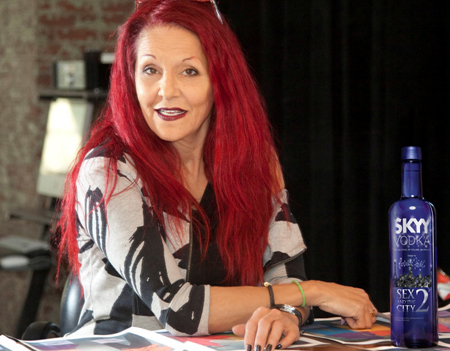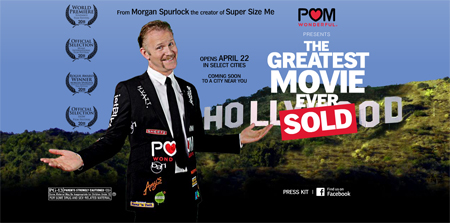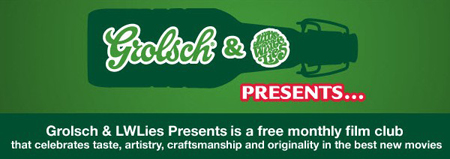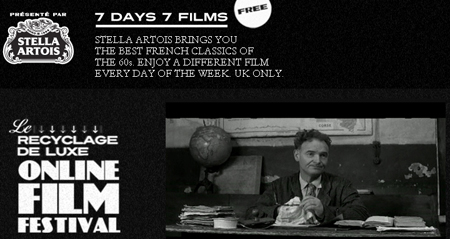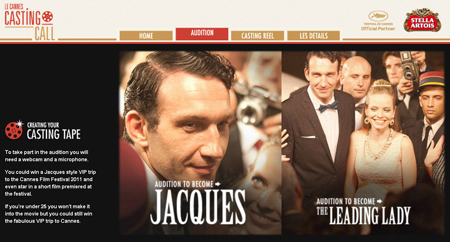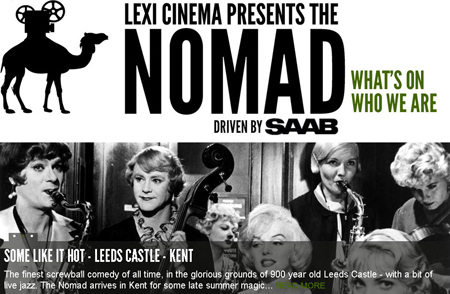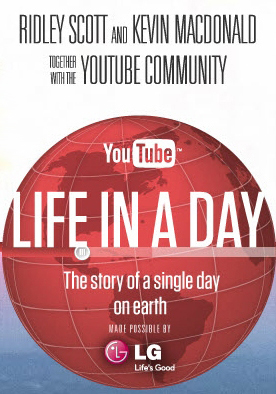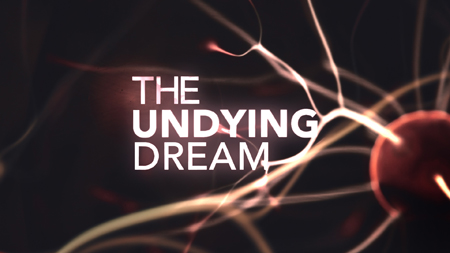The story of close relationship between brands and cinematography started nearly at the same time as the cinema itself was born—in the beginning of the movie era, the big companies promoted their products though short clips which were screened before movies. Now it’s not that easy to tell for sure for which product the pioneer ad was created, but according to a range of sources (IMDB is one of them), the first filmed advertising for a today’s global brand was shot for Dewar’s Scotch Whisky (1897). Today, connections between filmmaking industry and brands go beyond this simple presence and include a lot of examples such as much discussed product placement, festival sponsorship and opening cinema clubs, cinema-related advertising campaigns, collaboration with filmmakers on commercials, and creating movies under brands’ supervision.
Brands are involved in promotion of nearly every big movie hit—just remember the extensive McDonald’s (here and here) and Coca-Cola Zero advertising campaigns dedicated to ‘Avatar,’ SKYY, Mercedes-Benz and Maybach involvement in the ‘Sex and the City 2’ advertising, or Audi’s ‘The Tony Stark Innovation Challenge’ to support the launch of ‘Iron Man II’. Those are just a few examples of a multiply promotional projects created to support the new movies’ arrival on the screens. Brands also arrange exclusive parties for movie stars ahead or during the events (just like Grey Goose did this year for Oscar Nominees), release limited-edition products (like Rémy Martin) and sponsor big cinema events (like Renault and Stella Artois to name a few). They also tap highly recognized personalities in the filmmaking business to create unique pieces for promotion of their goods—just like LG invited Ennio Morricone to compose melodies for its smartphones, and Nike, Stella Artois, Gucci, Dior and dozens of other companies had their promotional videos shot by celebrated film directors (we won’t even try to list all the film stars featured in commercials since it would take hours to count all of them).
Сommercials or promotional videos are eventually forgotten and once seen it fades in public’s memory—usually, several weeks after the release no one remembers it. Still there’s a way for brands to make this ties with cinema eternal—for this ‘effect’, they have to not only support the launch of movies, but also be featured in them, and in case the film is a success, the brand will remind about itself every time the piece is watched, now or in 50 years. But it’s very important to be moderate here. Today, just every movie features at least a couple of brand products, and sometimes this presence becomes really annoying—recently, Brandchannel studied the tendency and named the winners of its Brandcameo Product Placement Award 2010, where Apple scooped the first position.
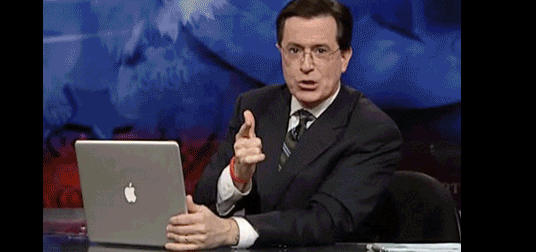
The best examples of product placement are films about brands and companies, or, to be more precious, about people behind them—‘The Social Network’ (Facebook), ‘Love and Other Drugs’ (Pfizer, Prozac) ‘Coco avant Chanel,’ (Chanel), and ‘Pirates of Silicon Valley’ (Apple) are just a few examples. Product placement in movies can become the theme of a full-length film as well—Morgan Spurlock and his ‘POM Wonderful Presents: The Greatest Movie Ever Sold’ documentary prove it.
Brands do not only support iconic film festivals, they also celebrate the big players and emerging talents within the industry with their own grants and financial donations. Last September, PUMA in collaboration with Channel 4 BRITDOC Foundation announced a launch of a series of PUMA.Creative awards backing social-issue documentary and promote it in the world to raise awareness of a variety of issues, which need public attention.

One of the biggest cinema fans is Jameson, which has been supporting a range of themed campaigns and events for years. Annually, the Irish whisky brand and Empire Magazine arrange a large-scale event, Jameson Empire Awards, which sees a plethora of celebrities honored based on the readers’ choice. The Jameson also invites aspiring filmmakers to make it big and present a 60-second version of a popular movie—the winner is awarded during the event. Earlier this year, Jameson for a second straight year became a sponsor of Film Independent Spirit Awards and gave its inaugural FIND Your Audience prize to the ‘Marwencol’ film.
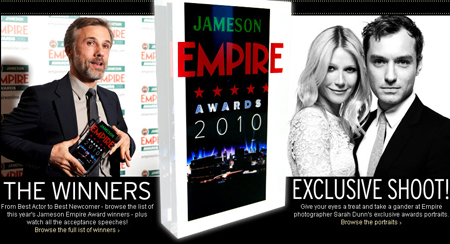
The brand also pays tribute to iconic movies through its Jameson Cult Film Club, which is “all about watching our favourite cult films at spectacular screenings, staged to transport our members into the film’s universe.” But it is not the only one brand committed to providing best movie watching experience: Grolsch and Stella Artois invite cinema addicts to watch a movie as well. The first of them encourages its fans to become members of the Grolsch & LWLies Presents club, “that celebrates taste, artistry, craftsmanship and originality in the best new movies” to be able to get tickets for new films as a present from the brand.
Stella Artois, which builds its advertising on the style and feel of the 60-ies, in December 2009 launched a series of online screenings—‘7 Days 7 Films.’ The brand showed its UK fans 7 old black-and-white cult movies including ‘Masculin feminin’ and ‘Lola’ as part of the one-week online festival.
Stella Artois is also a proud sponsor of Cannes International Film Festival, and this connection is highlighted via a plethora of awesome advertising projects. Last year, the brand kicked off a hilarious campaign, revolving around a ‘missing’ invented character Jacques d’Azur, the ‘King of Cannes’—in 2010 the brand was looking for his heir, and now it has announced a global casting for actors who might star as the ‘King’ in his biopic.
Some brands also manage to combine old traditions, screenings and fresh air in their movie-related activities. We mentioned three of them—Volkswagen‘s ‘See Film Differently,’ Levi’s ‘Rolling Roadshow’ (which invited fans to “enjoy some classic movies in the places where they were filmed”) and Volvo’s ‘Starlite Urban Drive-in’ campaigns—in the first part of our ‘Brands and the City’ review. Recently, they were joined by SAAB, which now sponsors The Nomad roaming pop-up cinema and aims to tour 150 locations across the UK and screen a variety of movies, “ranging from classics to cult, noir and silent to mainstream guilty pleasure films.” Some brands also become part of cinema history by creating their own movies.
Last summer, Google’s YouTube launched one-of-a-kind experiment called ‘Life in a Day,’ encouraging people from all around the globe participate in creation of a film by documenting their daily routines on July 24, 2010, and send it to the production team. The filmmaking crew got clips from 80,000 users from 192 countries and created a 90-minute a theatrical film based on the footage they received. The finished work, which was executive-produced by acclaimed filmmaker Ridley Scott, debuted at the 2011 Sundance Film Festival and was screened on YouTube on January 27.
This year, the Sundance Film festival also saw Honda’s latest short-film documentary ‘The Undying Dream’ from the ‘Dream The Impossible’ documentary series, which was launched in January 2009 and now includes eight films by celebrated directors. Philips also tried to be as ‘cinematographic’ as possible with its award-winning ‘Parallel Lines’ project and ‘Tell It Your Way’ competition, which encouraged contestants to create a visual story using the same script—the results of the both initiatives are stunning. LG Portugal also presents short films created for the brand by aspiring and recognized filmmakers—the works are all about LG’s statement and are saying that ‘Good Things Happen’ (so far, the project features three videos).
For the finish note, let’s remember a nice Audi’s campaign dubbed ‘Efficient Films’ where the brand asked users to write a movie description in just a couple of words, in less than 140 characters.
Now, in the world where most global brands have a very distinct identity and can be easily differentiated from others—for instance, AXE comes out as a ‘hunk,’ Procter & Gamble is a ‘respected man with a good background,’ Dove represents ‘a tender girl with a romantic attitude towards life,’ General Mills might become a ‘solicitous mother’ and so forth,—it’s high time to shoot a movie, where brands will be playing leading roles. Will it be a thriller, horror, comedy or romance? It’s now up to Hollywood to decide.
